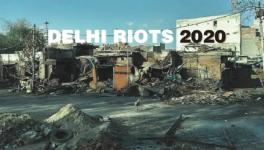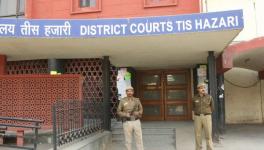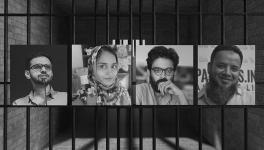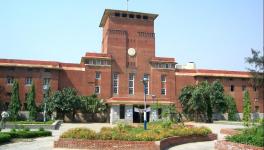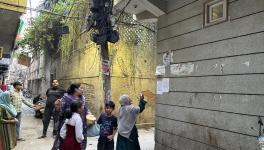Police Claims Vs Gaping Holes: Inside the Third Chargesheet in Delhi Riots' ‘Conspiracy’ Case
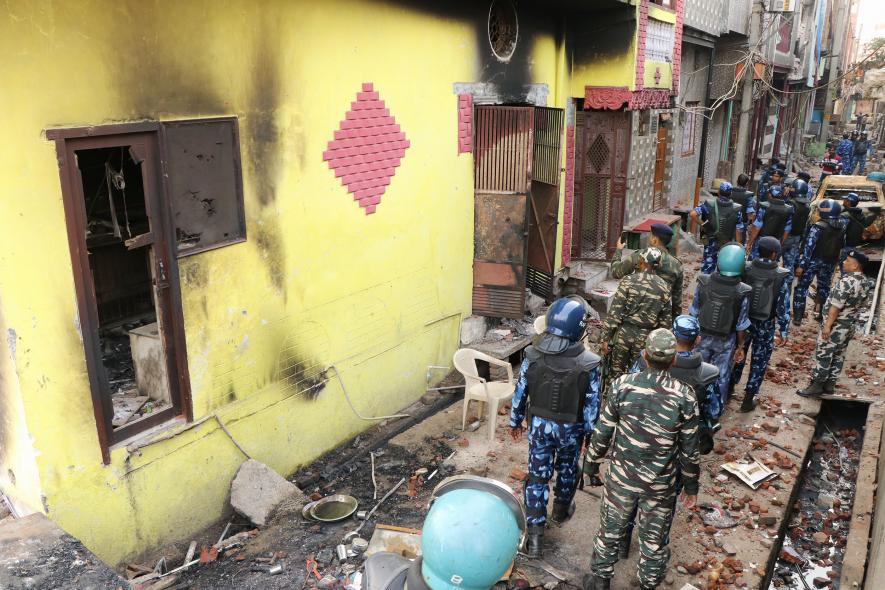
File Photo.
New Delhi: The Delhi Police’s Special Cell, which is probing the alleged conspiracy behind the February 2020 communal riots in North-East Delhi, has again reiterated that the deadly violence was “pre meditated”, “pre-planned” and carried out by the Muslim community who were “unprovoked”.
It has claimed that the riots, which resulted in 53 deaths, began when “Muslims living in Chand Bagh and New and Old Mustafabad areas were mobilised and funneled out of various lanes and made to descend on the main Wazirabad road, which has Yamuna Vihar and Bhajanpura (the localities having mixed population in close proximity) in order to precipitate a violent ‘Chakka Jaam’, which led to brutalisation intimidation and inflicting deadly injuries on police personnel and non-Muslim communities.’’
The investigators alleged the “other community” (Hindus) only “retaliated” in self-defense “since the only factor constant in the dynamics of human life is time, which records events as they actually happened”.
The conclusions have been reached in the second supplementary charge sheet filed in FIR No. 59/2020, which was lodged under the stringent Unlawful Activities (Prevention) Act (UAPA) against university students and research scholars – Sharjeel Imam, Meeran Haidar, Asif Iqbal Tanha and Gulfisha Fatma, Safoora Zargar, Natasha Narwal and Devangana Kalita – activists Umar Khalid, Khalid Saifi, Shifa-ur-Rahman and political leaders Ishrat Jahan and Tahir Hussain, including others.
Tensions in the trans-Yamuna region came to a boil on the evening of February 23, escalating into a full-blown riot which lasted for well beyond 72 hours. A total of 53 people were killed and over 500 suffered injuries in the violence.
Also Read: Delhi Riots: Clubbing of Unrelated FIRs a Major Obstacle in Victims’ Road to Justice
This final report is in continuation of the main charge sheet dated September 16, 2020. It was followed by the first supplementary charge sheet dated November 22 the same year.
In the 300-page charge sheet, the police claimed to have dug deeper into the alleged conspiracy by specifically investigating the violence that unfolded in and around the anti-CAA (Citizenship Amendment Act) protest site at Chand Bagh. Attempts have apparently been made to link the incidents (murder of Head Constable Ratan Lal and physical assault on several police officials) that took place here to the “large-scale conspiracy”.
While the first two charge sheets were based on testimonials and WhatsApp chats extracted from seized mobile phones of the accused, this theory by the police relies on CCTV footage obtained from cameras installed in the area by the Delhi government.
The police claimed to have analysed 33 CCTV cameras, of which only one installed at A-97, Nala Road, Chand Bagh, was operational. The rest were either not operational or “intentionally” disconnected from the source of power, dislocated and covered with clothes. The police claimed a juvenile, who has been identified, questioned and proceeded against under the Juvenile Justice Act, 2015, was pressed into service for the same.
“It was done very systematically in a very short span of 24 minutes starting from 12:26:59 and ending at 12:50:57 on February 24, 2020,” the police alleged.
Also Read: Delhi Riots: Bail Orders Narrate a Saga of ‘Doubtful’ Witnesses, ‘Concocted’ Evidence
Investigators claimed that the disabling of CCTV cameras in Chand Bagh and Mustafabad helped in the mobilisation of rioters in order to attack the police and the majority community.
Claims vs Gaping Holes
1. The police claimed the riots began on February 24 from Wazirabad main road in Chand Bagh. However, the reality is that incidents began on February 23 following a provocative speech by Bharatiya Janata Party (BJP) leader Kapil Mishra near the Maujpur traffic signal and that its epicentres were Jaffrabad and Maujpur.
Soon after Mishra left the spot after giving an ultimatum to the police to remove people who were blocking the Jaffrabad-Maujpur-Babarpur road near the Jaffrabad metro station in protest against the citizenship law and proposed National Register of Citizens (NRC) and the National Population Register (NPR), a mob gathered there and started pelting stones at the anti-CAA agitators.
The mob was allegedly led by the far-right Hindutva leader Ragini Tiwari, who was live on Facebook, instigating people to take part in the violence and attack Muslims.
The stone-pelting incident led to a tense atmosphere in the area, making the anti-CAA protesters stage another dharna (sit-in) in other north-east Delhi neighborhoods, such as Kardampuri.
While the Delhi Police have used the transcripts of the WhatsApp group 'DPSG', where members were seen discussing how anti-CAA protests should be organised for maximum impact as one of the most crucial pieces of evidence to prove the alleged conspiracy, the chats there contain evidence that the rioting started from Maujpur after Mishra’s speech. But in the “chronology of events” presented by the police in the voluminous document, this does not find a mention.
Also Read: Delhi Riots: A Year Later, No Breakthrough in Six Murder Cases
Even a message shared on the DPSG WhatsApp group at 5:38 PM corroborates the fact that the violence had already started in the afternoon on February 23. “Pro-CAA protesters are pelting stones at the locals and anti-CAA protesters in the Maujpur area,” reads the message.
Some time after this message was circulated, members of the group started sharing videos of the same. There is also ample evidence to back the allegation that Mishra’s speech at the Maujpur tri-section was highly provocative in nature and resulted in large-scale violence in the region.
Despite the presence of ample evidence to prove the allegation, the police seem to be hiding the fact by choosing not to address the flash point of the riots. Claiming that the riots started from Chand Bagh perhaps helps the police give a clean chit to Mishra and Tiwari.
2. The investigators have claimed that the analysis of 33 CCTV cameras of Muslim-concentrated Chand Bagh and Mustafabad (old and new) and 43 cameras in the predominantly non-Muslim areas of Khajoori Khas, Karawal Nagar, Sonia Vihar and Jyoti Nagar of the same date (February 24, 2020) and duration (12 noon to 1 pm) reinforced the following findings — there was mobilisation of people in the Muslim majority areas while life was “tranquil” and “unperturbed” by in the areas inhabited by non-Muslims.
Also Read: Delhi Violence: How ‘Kattar Hindu Ekta’ WhatsApp Group Mobilised Rioters for Killings
It raises two concerns: first, why do the police continue to ignore the violence that took place on February 23, and why is the CCTV footage of non-Muslim dominated Maujpur not part of the charge sheet? Second, the police claimed the areas inhibited by non-Muslims had no mobilisation on February 24 between 12 noon to 1 pm but chose not to include visuals of these “tranquil and undisturbed” areas in the charge sheet. Why?
Additionally, expecting mobilisation during a said duration everywhere in north-east Delhi is illogical.
3. The police in this charge sheet have also concluded that the riots were “premeditated and pre-planned by the key conspirators and masterminds whose names and identities have already been submitted before this court”.
Every criminal investigation needs a direct link between the evidence submitted to the court and the accused who is believed to have committed the illegal act. With the aim to establish the criminal intent of Mohammad Saleem Khan, who is already behind bars under the UAPA and whom the police call the main organiser of the Chand Bagh protest site, investigators have attached visuals where he can be seen in the crowd with a stick in his hand.
However, there seems to have been no attempt during the investigation exercise to link him to the crime committed, as visuals of the same period from the other side have not been attached. Had there been footage of the Hindu-dominated regions, only then could it have been proven whether there was provocation from the other group.
Secondly, there is no solid evidence to support any link between the allegation of "intentionally" disabling of CCTV cameras and the "unprovoked" mobilisation of the alleged Muslim rioters.
Going by all three charge sheets in the conspiracy and the evidence submitted to the court, it appears that there is no link between the “masterminds” of the riots and evidence submitted against them. There is also seemingly no evidence to link the accused with the disabling of CCTV cameras.
Get the latest reports & analysis with people's perspective on Protests, movements & deep analytical videos, discussions of the current affairs in your Telegram app. Subscribe to NewsClick's Telegram channel & get Real-Time updates on stories, as they get published on our website.














